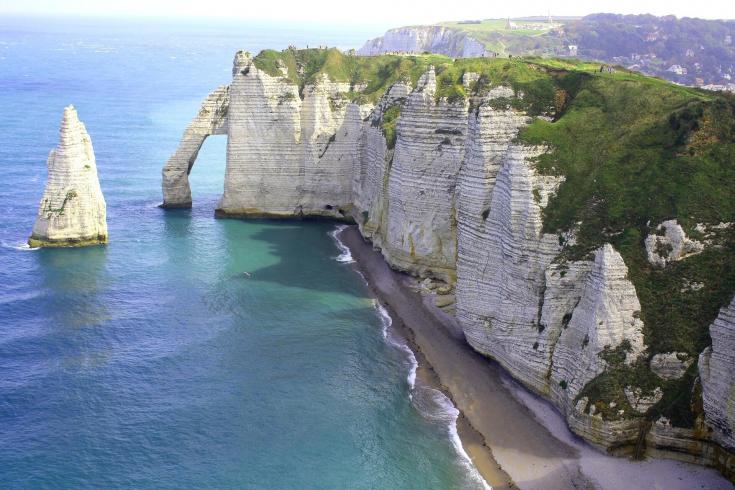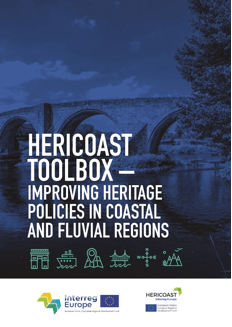HERICOAST Toolbox – Improving Heritage Policies in Coastal and Fluvial Regions

Many fluvial and coastal regions across Europe seek to strengthen the management of their heritage. These improvements are taking place in the context of the EU Work Plan for Culture (2015-2018) and the Council conclusions on participatory governance of cultural heritage, the latter emphasising the importance of skills, training and knowledge transfer. Partners within the Interreg Europe HERICOAST project have been seeking for ways to change their practices for the management of cultural heritage assets.
For the project the development of a toolbox – Improving Heritage Policies in Coastal and Fluvial Regions – was a key milestone, or as Kåre Kristiansen, from the lead partner organization of the project, Vest Agder County Council, says "As a support in our internal learning process we developed the toolbox. However, with this work we also hope to inspire regions to improve their policies". The toolkit was prepared by the participating regions through a process of intensive workshops and communication building upon their experiences and good practices."
The toolbox is comprised of six chapters: Conceptual Framework (Chapter 1); Taking a coastal heritage approach (Chapter 2); Evidence-based, more stakeholder-centred regional policy developments (Chapter 3); Public sector – administration and politicians (Chapter 4); Private sector – profit and non-profit (Chapter 5); and Integration function of events (Chapter 6).
Overcome the divide between cultural and natural heritage
For one of the advisory partners, Linde Egberts of Vrieje Universiteit Amsterdam, who facilitated the learning process, it was important to stress the importance of taking regional, spatial and historical characteristics into account while not losing sight of the diverse contemporary economic, social, cultural and ecological challenges. In the first chapter of the toolbox, Ms. Egberts elaborate on this, pointing at the challenges of balancing tourism and conservation and the drawbacks of separating cultural and natural heritage. In fact, making the holistic concept of landscape central in heritage management could contribute to overcoming these divides. In this context, the text also takes a closer look at the links between cultural heritage and ecology, i.e. the impact of climate change on some sites.
Integrate heritage in regional development measures
The second chapter outlines the different approaches towards cultural heritage as a strategic resource in the redevelopment of coastal and fluvial areas. It emphasises the urgent need to improve the integration of heritage in regional development measures and underlines the significance of involveing citizens, universities and private businesses in the management of the regions’ natural and cultural heritage. Used carefully and with consideration, cultural heritage can become a strategic tool to improve social cohesion and give impulse for improved quality of life. The good practice from Castile and Leon’s management of the Castile Waterway, characterised by the transformation of an old waterday into a sustainable tourism destination with public access to leisure and recreation activities as well as cultural offers, well illustrates this potential.
Shift towards more participatory and evidence-based policymaking processes
In recent years we have seen a shift towards more participatory and evidence-based policymaking processes. In the third chapter of the publication, the project’s second advisory partner, Dirk Gotzmann from Civilscape, goes into depth on how this new trend affects the policy design over the various cycles of the process. The expert calls for more public-private partnerships and specifies the different stages of the regional policy development process: agenda setting, policy formulation, decision-making, implementation, evaluation. Key findings show how the adoption of a holistic approach can offer added value when measuring the impact of cultural heritage on economic performance and employment, regional attractiveness, creativity and innovation, climate change or social cohesion. Naturally, the role of stakeholder communication, knowledge transfer and engagement are key features emphasised by the author in this context.

Vertical and horizontal integration of policies
Amongst the Hericoast partners one key learning point has been that policies for the management of natural and cultural heritage cannot be implemented as an isolated process, but need vertical integration through multi-level governance approach and horizontal integration with other sectors and the overall regional policy agenda. Based on examples from the partnership, the toolkit therefore describes how local and regional governments have a specific role in this context that is closely related to the new approaches to multi-level governance, evidence-based policies and stakeholder involvement. Chapter 4 presents strategies for coordination of actions and knowledge exchange, both vertically and horizontally, while improving local economic, social, cultural and environmental conditions. 95,000 local and regional authorities currently have significant powers in key sectors such as education, the environment, economic development, town and country planning, transport, public services and social policies. In the context of local and regional government, a particular challenge is to manage different and often conflicting evidence between different policy sectors on a horizontal level. The co-creation of the Plan of the Cultural Heritage of Castille and Leon is a good example for that. The process is characterized by an open debate through an Open Government tool and involved businesses, professionals and political parties in an overall progressive participation of civil society.
Private sector and NGOs: important actors in heritage management
Another important experience stemming from the Hericoast partnership has been the importance of involving the private sector in the protection of cultural heritage, as outlined in the fifth chapter of the featured toolbox. The chapter explores the importance of stakeholder-centered policymaking, especially in regions and countries with limited public funds and a large tourism sector based on a small fragmented businesses structures. Consequently, the toolbox describes different strategies for engaging with both profit and non-profit stakeholders. The Strategic plan for heritage preservation and tourism development in Molise Orientale (Italy) is an interesting practice which demonstrates how a Smart Tourism Governance model based on landscape and heritage management can suit 40 municipalities and a vast number of tourist operators, associations, agencies and institutions managing the cultural heritage of the region.
From theory to practice – the toolbox serving local and regional policymakers
The toolbox would be useful for coastal and fluvial regions who would like to embark on a process of innovative holistic planning of their cultural heritage.
"We found the toolbox particular helpful when transferring the project's learning process to our local stakeholders where it was a great support in the development of the regional action plan. We see a potential for the toolbox as a useful roadmap for other regional and local authorities who would like to develop new regional policies based on a co-creation and evidence-based approach." – Kåre Kristiansen.
More information:
- Kåre Kristiansen, Vest Agder County Council
- https://www.interregeurope.eu/hericoast/
